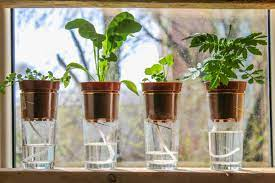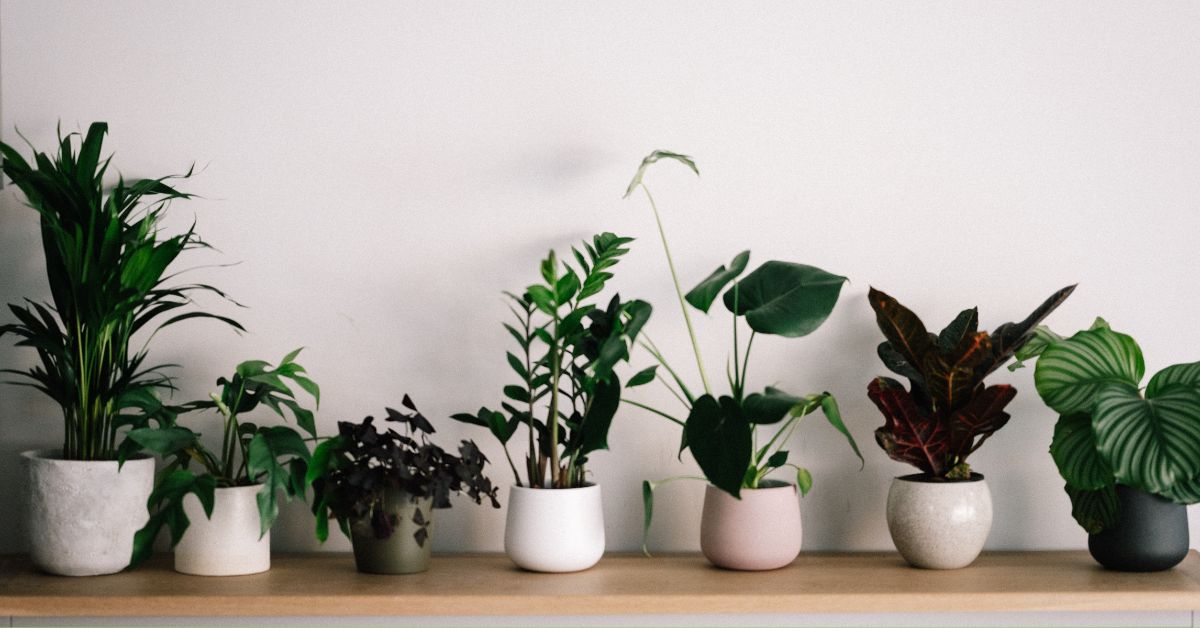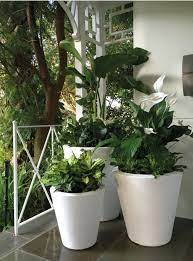
Pots that self-water is perfect for anyone who forgets to water their plants. Plants that don’t like being watered by hand will benefit from self-watering pots. This post has tips if you have a finicky fiddle leaf fig, a sensitive succulent, or a fickle fern. There are a few plants that I’ve successfully grown in self-watering pots for years.
Here are ten plants that thrive in self-watering pots
African Violets (Saintpaulia)
The best way to grow African violet indoors is to water it from the bottom up. As a result, if we water it from top to bottom, the crown region of the plant can rot.
Additionally, African Violets can benefit from the use of distilled water. The leaves of African Violets can be occasionally sprayed with water to remove dust and salt.
Peace Lilies (Spathiphyllum)
The Peace Lilies and Spaths need to be watered once a week. For my Peace Lillies, I prefer self-watering pots. This is primarily because a self-watering plant keeps the Peace Lilies hydrated.
Lilies thrive in humid soil and need moist soil. With a self-watering pot, the plant gets the necessary water, and there is no risk of overwatering.
Pothos or Devil’s Ivy (Epipremnum Aureum)
A self-watering pot works well for Pothos, too, as it has many similar characteristics to other plants. Self-watering planters prevent root rots. Pothos suffers either from a lack of water or overwatering.
Our Photo plants become susceptible to fungal infections if they are overwatered. For any situation such as this, self-watering pots are the best option. You should always allow the soil to dry before refilling self-watering pots. Pothos takes nutrients from the soil when it is dry.
Fibre Optic Plant (Isolepis Cernua)
Fibre Optic Plants, or low bulrush as they are also called, are primarily aquatic plants. To stay healthy, the plant needs adequate amounts of water. Fibre Optic Plants are commonly grown in water gardens. Self-watering pots are also suitable for plants.
It is better to fill the reservoir to the top since it requires much moisture. In contrast to Pothos and other plants, Fiber Optic Plants cannot be allowed to dry out.
Umbrella Palm (Cyperus Alternifolius)
Umbrella Palms require plenty of water, just like Fiber Optic Plants. They are also semi-aquatic plants. A self-watering pot is an excellent way to grow an Umbrella Palm.
Water is the primary medium for its growth, so we need to refill the reservoir periodically. Watering the plant and checking it periodically can help it thrive.
We must ensure that the roots of the umbrella palm remain moist and have moisture. When their roots become dry, the plant will suffer. Brown spots appear on the leaf tips of umbrella palms due to dehydration. We can quickly solve this issue when the Umbrella Palm is planted in a self-watering pot.
Ferns (Polypodiopsida)
When we plant ferns in peaty soil, we need to provide them with plenty of moisture and humidity. Using water at room temperature can ensure that our Ferns will remain healthy.
The most common causes of Fern’s death are either under-watering or over-watering. When Ferns face the issue of under-watering, their leaves become yellow and brittle. In contrast, overwatering can cause rotting of the roots and yellowing of the leaves.
Selaginella
Plants like Selaginella need high humidity to survive. The plants may wilt and die when there is not enough moisture. Selaginella plants usually perish because of uprooting, which occurs due to dehydration.
A plant’s health can be restored by providing it with sufficient amounts of water. As a means of ensuring their growth and providing them with a steady water supply, I planted Selaginella plants in a self-watering pot.

Pitcher Plants (Sarracenia)
Like other carnivorous plants, pitcher plants require special attention and care. They require a proper drainage system to thrive. In addition, we should make sure it receives plenty of water.
Especially in warmer regions, self-watering pots can be relied upon. To ensure that the plant receives proper water in such places, we have to fill the reservoir every morning. The self-watering container can also be equipped with an automatic watering system.
Cherry Tomatoes Plant
When grown in large pots, cherry tomatoes thrive. It is because the soil can absorb more water. Therefore, they need more water to produce a good crop.
Blossom end rot and tomato splits can be caused by under-watering. Overwatering can also produce similar results in plants. Therefore, a steady supply of water and nutrients is necessary to ensure the plant’s health. The soil doesn’t need to be damp for it to be moist.
Basil (Ocimum Basilicum)
Among the many culinary uses of basil, it requires a lot of sunlight and heat. Those conditions make it thrive. Basil is likely to die if it is too cold.
Plants can avoid these problems if they are provided with a favorable environment. Basil plants grow well indoors or under fluorescent lights, close to a windowsill.
Do self-watering planters cause root rot?
Self-watering planters can sometimes cause root rot. Whenever an overflow is not in place, this leads to root rot. If the container is not there, it could flood and cause fungal infections.
The plant can also grow slower if it is exposed to it. Using self-watering pots of high quality will help us overcome this problem. Our plants will be more healthy.
Conclusion

Above are 10 of the best plants that grow well in self-watering pots! Hopefully, this information will help you decide what plants to buy.
FAQs
Succulents do well in self-watering pots?
Proper drainage and air circulation are essential for succulents. The soil must remain dry for them to thrive. On the other hand, self-watering pots are ideal for growing plants that need lots of moisture.
Increasing moisture content may cause root rot in succulents and other plants like cacti. If you choose to plant a succulent in a self-watering container, you should avoid over-watering it.
If you use a self-watering pot for your succulents, you don’t have to worry about watering it frequently.
Are self-watering containers suitable for growing herbs?
Yes! Growing herbs requires a lot of moisture. The plant will receive the optimal amount of water with a self-watering system. Furthermore, it can prevent the chances of overwatering and underwatering.
Herbs may wilt and die if there is not enough water. You can use self-watering containers for herbs, such as Mint, Rosemary, Thyme, etc. A self-watering container keeps the herbs adequately moist.
Are mosquitoes attracted to self-watering pots?
Mosquito infestation is possible when we use self-watering pots. Most often, it occurs when we have them outdoors. By bringing the self-watering planter inside, we can reduce the mosquito problem. Covering the reservoir with a waterproof adhesive will also help reduce mosquito infestations.


